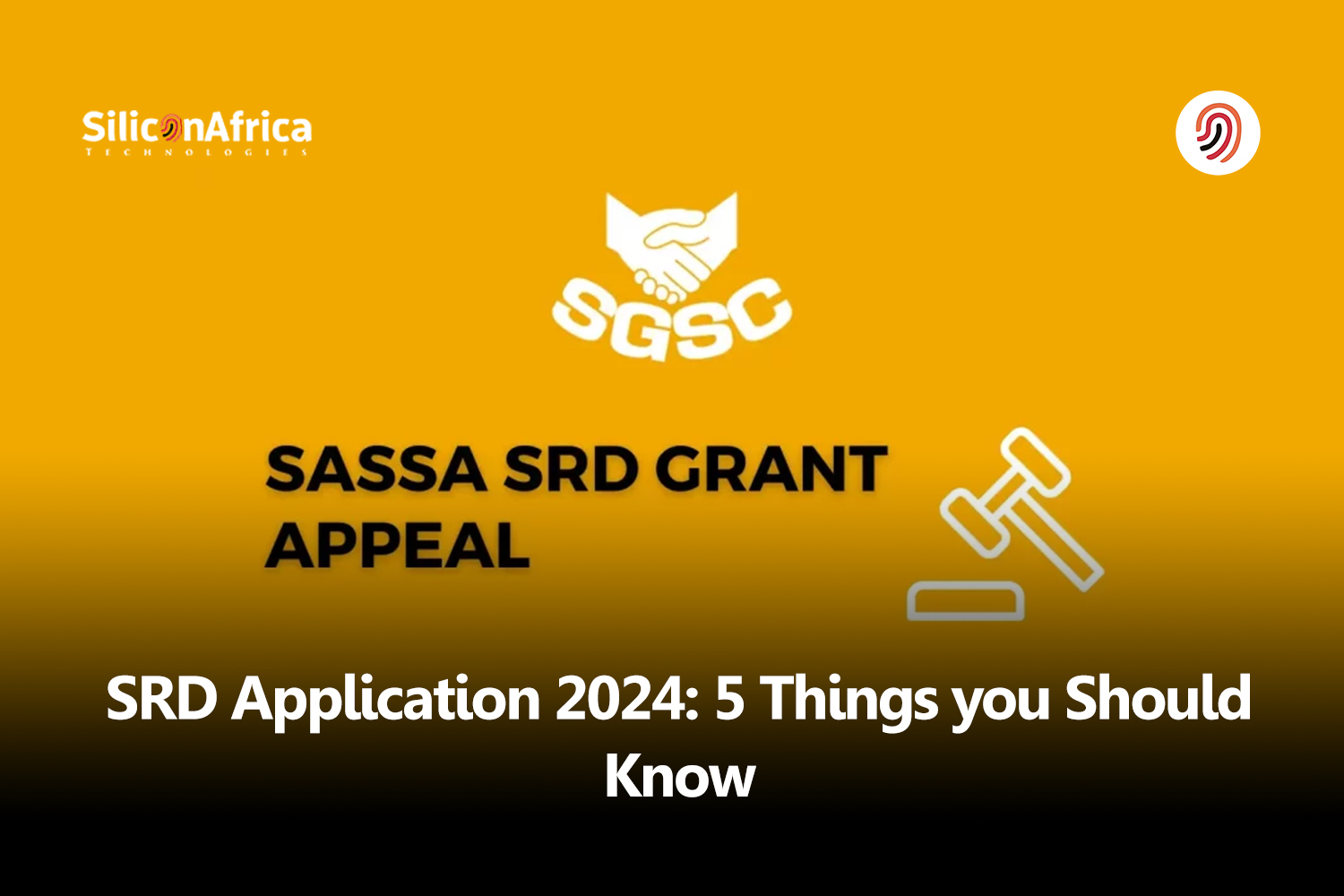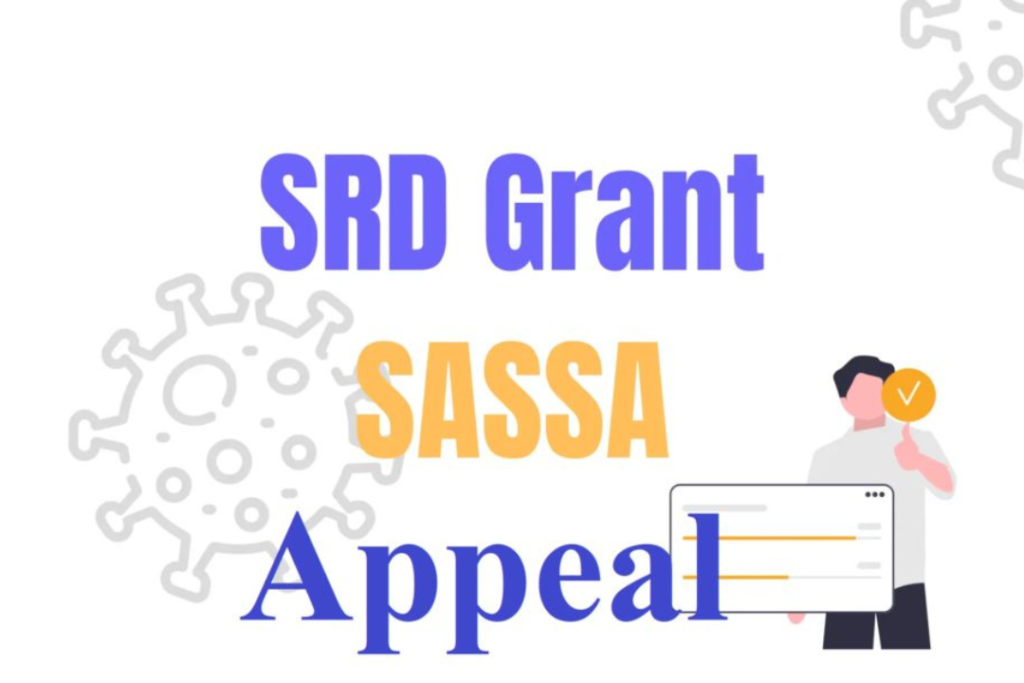Physical Address
60 Ekwema Cres, Layout 460281, Imo
Physical Address
60 Ekwema Cres, Layout 460281, Imo

In 2024, South Africa’s SRD (Social Relief of Distress) program continues to be a crucial support for those who are going through tough times financially. The SRD application process might seem daunting, but understanding its key aspects can simplify things significantly.
Whether you’re applying for the first time or seeking continued assistance, it’s vital to grasp what the SRD program entails, how it operates, and the benefits it offers.
This article will walk you through five essential things everyone should know about the SRD application in South Africa, making the process more approachable. From eligibility criteria to the application procedure, we’ve got you covered.
Stay informed and ensure you or your loved ones don’t miss out on the support the SRD program provides. Let’s dive into five essential aspects you should know about the SRD application in South Africa and how it can be a lifeline for those in need.

The Social Relief of Distress (SRD) program, orchestrated by the South African Social Security Agency (SASSA), is designed as a beacon of hope for individuals and families plunged into severe financial difficulties, rendering them unable to sustain their basic living needs.
This program stands as a vital support mechanism, providing interim relief and aid to those trapped in dire circumstances, such as a crisis or an unforeseen emergency. To become beneficiaries of the SRD program, applicants are required to fulfill specific eligibility criteria.
These criteria are carefully set to ensure that assistance is directed to those in genuine need and may vary according to the prevailing conditions and SASSA’s prevailing guidelines.
This safety net is particularly crucial in times of heightened need, aiming to alleviate immediate pressures and assist in stabilizing the conditions of affected communities.
Through the SRD program, SASSA underscores its commitment to upholding social welfare and contributing to the well-being of the nation’s most vulnerable populations.
Related – Latest SASSA SRD Contact Channels for Quick Help
If you’re curious about the SRD application, especially within the context of South Africa, here are the top 5 things you should be aware of. This is aimed to give you a straightforward, easy-to-understand overview of the SRD program and its application process.
Now that we are aware of what the SRD program is, let’s dive into the full details of the top 5 things you should know to get a clearer understanding:
As we mentioned earlier, the SRD program is particularly crucial in providing temporary financial assistance to those without any means of support from either their families or other social assistance programs.
The eligibility criteria and requirements for the SRD application in South Africa are designed to ensure that this aid reaches the most vulnerable and needy segments of the population. Understanding these requirements is essential for prospective applicants. Let’s take a look at them!
The SRD program, administered by the South African Social Security Agency (SASSA), has set specific eligibility criteria to qualify for this grant. These criteria include:
For a successful SRD application in South Africa, several key requirements must be met, including but not limited to:
Read Also – Full Details on Hustler Fund Application in Kenya 2024
Alright, let’s break down the Application Process for the SRD (Social Relief of Distress) Program into simple terms. Imagine you’re applying for a helping hand from the government or a relevant organization because you’re going through a tough time financially. This is how to go about the application process.
When you are convinced that you fit the eligibility criteria, you can apply for the SRD award via a variety of techniques.
Consider this method as a last-ditch effort to apply for the SRD grant since it’s not as straightforward as using the internet.
Also Read – Latest Update on My NSFAS Application Status 2024
To ensure that the aid reaches those genuinely in need, applicants are required to submit certain documents as part of their application process. Here is a detailed look at the documents required for SRD application in South Africa:
The applicant must provide a valid South African ID document. This serves as a primary document for verifying the applicant’s identity. In cases where an applicant is not a South African citizen but is lawfully residing in the country, a valid passport and a permit of residence might be required.
Applicants must furnish proof of their residential address. This can be in the form of a utility bill (such as an electricity or water bill) in the applicant’s name, a lease agreement, or an affidavit from a local authority confirming the applicant’s place of residence. This document is critical for determining the applicant’s residential status and for logistical purposes related to the grant distribution.
Since the SRD grants are typically paid directly into the beneficiaries’ bank accounts, applicants are required to provide their banking details, including the name of the bank, account number, and branch code.
This information must correspond with the name on the Identity Document to avoid fraud and ensure that the funds reach the intended recipient. If the applicant does not have a bank account, alternative arrangements can be made for the collection of the grant.
Applicants need to demonstrate that they are either unemployed or have an income below a certain threshold set by the government. Proof of income can be shown through payslips, an employment contract indicating salary, or bank statements. Unemployed applicants may be asked to provide an affidavit or register their details with the Department of Labour as proof of their unemployment status.
If the application for SRD is based on a medical disability, the applicant must submit a medical report or evidence proving the disability. This documentation is necessary for cases where the grant is sought due to a temporary disability that prevents the applicant from earning an income.
For applications related to disasters (e.g., the death of a breadwinner), relevant documents such as death certificates must be submitted to support the claim.
Depending on the nature of the distress or the specific circumstances of the applicant, SASSA may require additional documents. These could include school attendance certificates for households with children or police report in cases of disaster relief due to crimes like arson or theft.
The SRD program aims to provide temporary assistance to individuals and families in need until they can get back on their feet. However, there might be instances when an application for SRD is declined, and the applicant believes this decision was incorrect. This is where the SRD application appeal process comes into play.
Simply put, an appeal is a formal request for the review of a decision made regarding your SRD application. If your application for the Social Relief of Distress grant is declined, and you believe this was an error or that your situation was misunderstood or not correctly assessed, you have the option to challenge that judgment.
Here’s a simplified version of what that procedure could look like:
First off, get clear on why your claim was denied. The denial letter should explain the reasons. It could be due to insufficient medical information, eligibility issues, or something. Missing it could mean you lose the opportunity to do something else.
There’s usually a time limit for submitting an appeal (like 180 days after you receive the denial), so make note of this deadline. challenge the decision.
Collect everything you might need to support your case. This can include more detailed medical records, letters from your doctors explaining your condition, and any other information that shows you should be entitled to benefits.
Prepare a detailed letter to the insurance company or plan administrator. Explain why you disagree with the denial and include all your supporting evidence. Be clear, thorough, and as specific as possible.
Send your appeal letter along with all the evidence you’ve gathered. Make sure to keep copies for yourself and consider sending them via a method that provides proof of delivery, like certified mail or online.
Your appeal will be reviewed by people who were not involved in the original denial decision. This can take some time, depending on the complexity of your case and the amount of information you’ve submitted.
Eventually, you’ll receive a decision on your appeal. If your appeal is successful, you’ll start receiving your benefits. If not, you might have the option to appeal again, depending on the terms of your plan, or seek other forms of dispute resolution, such as litigation.
Read Also – SASSA SRD Reapplication Step-by-Step Guide 2024
The SRD program usually has a defined payment schedule that outlines when beneficiaries can expect their disbursement. This could be monthly, bi-monthly, or another predetermined interval. The schedule is communicated to beneficiaries at the outset to set expectations.
The SRD application in South Africa for 2024 is essential for those in need. The SRD program is designed to support vulnerable individuals financially.
It’s important to understand the eligibility criteria, how to apply, and the payment methods. Also, knowing the documentation required and staying updated on the status of your application is crucial.
Familiarizing yourself with these five key aspects can significantly enhance your experience and success with the SRD application. So, get informed and take the necessary steps to benefit from this valuable program
The application process for the SRD Grant is typically conducted online to streamline and simplify submissions. Prospective applicants are encouraged to visit the official website of the responsible governmental department
Notification methods may include SMS, email, or updates through the official website where you submitted your application.
The processing time for SRD applications can vary widely depending on the volume of applications received, the verification processes in place, and the efficiency of the organization managing the applications.